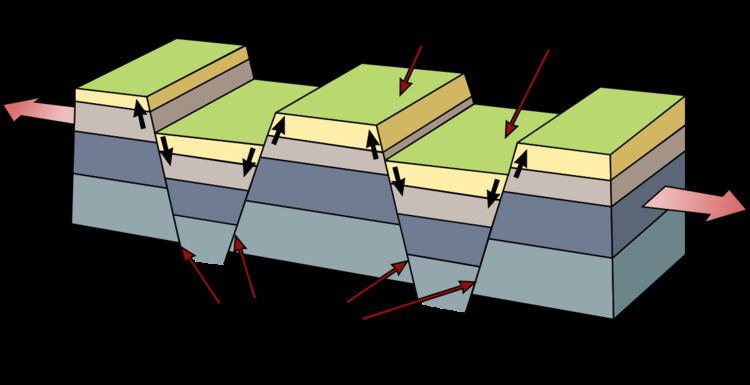 | ||
In geology, horst and graben refer to regions that lie between normal faults and are either higher or lower than the area beyond the faults. A horst represents a block pushed upward relative to the blocks on either side by the faulting, and a graben is a block generally long compared to its width that has been lowered relative to the blocks on either side due to the faulting. Horst and graben are formed when normal fault of opposite dip occur in pair with parallel strike lines. Horst and graben are always formed together. Graben are usually represented by low-lying areas such as rifts and river valleys whereas horsts represent the ridges between or on either side of these valleys.
The Condroz and Ardennes region of Wallonia are good examples of a succession of horst and graben
